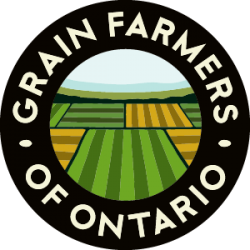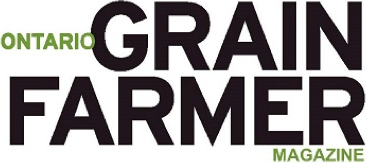Market Development and Sustainability
What we do
The Market Development and Sustainability team works primarily across three pillars from Grain Farmers of Ontario’s Strategic Plan: protecting and growing markets, farm sustainability, and advocacy and public trust.
Protect and grow markets
Market Development and Sustainability works to enhance the usage and value of Ontario grains both domestically and internationally through the following initiatives:
- Grains Innovation Fund: Annual fund for investing in novel projects that have the potential to grow market opportunities for Ontario grains.
- Wheat Harvest Survey: Using our annual survey that captures and reports on the quality of Ontario’s wheat crop, we share milling and baking quality results with key customers to build their interest and confidence in sourcing Ontario grains.
- Value-added investment: Promoting Ontario as a premier destination for value-added processing investment in the food, drink, and bioeconomy sectors to help grow and diversify domestic markets for Ontario grains.
- International trade missions: Grain Farmers of Ontario visits key export markets to meet with customers, and hosts customers in Ontario to showcase crop production, quality, and sustainability.
- Market access: Monitoring and helping farmers and exporters respond to local and global opportunities and issues that can restrict or expand market access, such as: changing market entry requirements like maximum residue levels, regulatory requirements, or changes in tariffs.
Farm sustainability
The market and development team provides farmer-members with the tools and knowledge to be economically sustainable while meeting their commitments to the environment and society through the following initiatives:
- Sustainability roadmap: Ensuring farmers are well-positioned to voluntarily maintain and advance on-farm sustainability, meet market sustainability demands, and accurately and confidently communicate sustainability progress to stakeholders. Monitoring and analyzing end-user customer requirements and priorities to help farmers and the value chain anticipate and respond to sustainability demands.
- Sustainability programs: Steering several programs that can help farmers communicate their farm sustainability to the value chain. These include:
- Sustainability communication: Helping stakeholders understand practice and technology adoption rates and environmental outcomes in the context of Ontario’s unique production systems.
Advocacy and Public Trust
The market development and sustainability team collaborates with other departments to advocate for policies that ensure a sustainable future for farmer-members and build confidence, trust, and support for modern grain farming through the following initiatives:
- Market and Sustainability Policy: Leveraging market insights, sustainability expertise, and value chain connections, the team helps ensure market- and sustainability-based policies are sound, fair, science-based, and supportive of farmer success. Current government policies the team is focusing on include:
- Clean Fuel Regulation
- Canada’s Sustainable Agriculture Strategy
- Canada’s Fertilizer Emission Reduction Target
- European Union’s Deforestation-free Commodity Regulation
- Quality Assessment: Participating in Canadian Grain Commission standards committees and developing industry tools like the Ontario Code of Practice for Trade in Barley, Canola, Corn, Oats and Wheat to support fairness and transparency for producer deliveries.
- Grain Farmers of Ontario has developed a Code of Practice with the Ontario Agri Business Association and the Ontario Canola Growers Association as a recommendation of best practice for dispute resolution for producer deliveries to country or terminal elevators.
Please visit the other pages under Market Development and Sustainability to learn more:
News and updates
Updates on Market Development and Sustainability activities.

